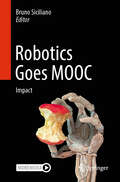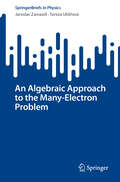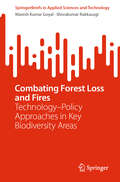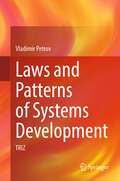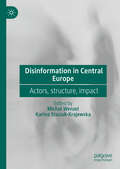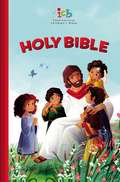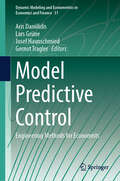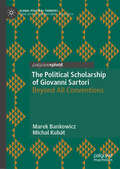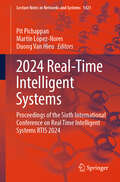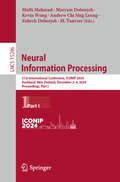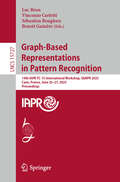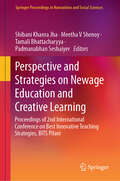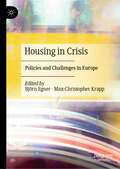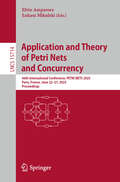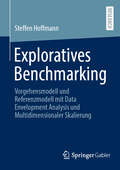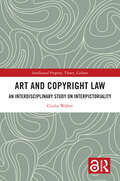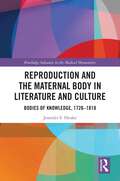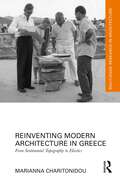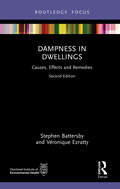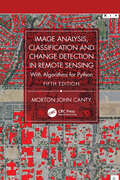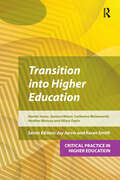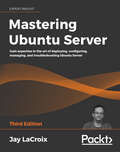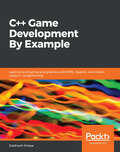- Table View
- List View
Robotics Goes MOOC: Impact
by Bruno SicilianoIt is often read in the media that AI and Robotics are the primary cause of technology unemployment. AI and machine learning techniques are expected to take over lower-level tasks, while humans can spend more time with higher-level tasks. In perspective, it can be said that jobs requiring boring cognitive tasks or repeatable and dangerous physical tasks will be considerably shredded by automation thanks to the wide adoption of AI & Robotics technology to replace humans, while jobs requiring challenging cognitive tasks or unstructured physical tasks will be suitably re-engineered with the progressive introduction of AI & Robotics technology to assist humans.From the discussion above, it should be clear that in a world populated by humans and robots, issues arise that go beyond engineering and technology due to the impact resulting from the use of robots in various application scenarios. The anthropization of robots cannot ignore the resolution of those ethical, legal, sociological, economic (ELSE) problems that have so far slowed their spread in our society.The final book of the Robotics Goes MOOC project enlightens the impact of using robotic technology in the main fields of application, namely, industrial robots as in Chapter 1 by Bischoff et al, medical robotics as in Chapter 2 by Dario et al, aerial robots as in Chapter 3 by Ollero et al, orbital robotics as in Chapter 4 by Lampariello, underwater robots in Chapter 5 by Antonelli, and rescue robots as in Chapter 6 by Murphy. The last part is devoted to the open dilemma of using and accepting robots in human co-habited environments which is addressed in Chapter 7 on social robotics by Pandey and the very final chapter by Tamburrini on the important issues raised with roboethics.
An Algebraic Approach to the Many-Electron Problem (SpringerBriefs in Physics)
by Jaroslav Zamastil Tereza UhlířováThis book presents an algebraic approach to the coupled cluster method for many-electron systems, pioneered by Josef Paldus. Using field methods along with an algebraic, rather than diagrammatic, approach facilitates a way of deriving the coupled cluster method which is readily understandable at the graduate level. The book begins with the notion of the quantized electron field and shows how the N-electron Hamiltonian can be expressed in its language. This is followed by introduction of the Fermi vacuum and derivation of the Hartree-Fock equations along with conditions for stability of their solutions. Following this groundwork, the book discusses a method of configuration interaction to account for dynamical correlations between electrons, pointing out the size-extensivity problem, and showing how this problem is solved with the coupled cluster approach. This is followed by derivation of the coupled cluster equations in spin-orbital form. Finally, the book explores practical aspects, showing how one may take advantage of permutational and spin symmetries, and how to solve coupled-cluster equations, illustrated by the Hubbard model of benzene, the simplest quasi-realistic model of electron correlation.
Technology–Policy Interface for Combating Forest Loss and Fires (SpringerBriefs in Applied Sciences and Technology)
by Manish Kumar Goyal Shivukumar RakkasagiThis book explores Key Biodiversity Areas (KBAs) in India, addressing the challenges and proposing solutions for the conservation of these critical ecosystems. It examines the pivotal role of KBAs in biodiversity conservation and their significance in the global context, offering data-driven analyses of deforestation, habitat fragmentation, and forest loss. Utilizing open-source data, the book assesses the extent of habitat destruction, investigates the frequency and effects of fires on biodiversity and ecosystem services, and proposes actionable fire management strategies. The authors also explores the impact of artificial lighting on wildlife within KBAs, illustrating how human development alters natural habitats and offering mitigation measures. By integrating technology and policy, the book emphasizes the application of remote sensing and data analytics to develop evidence-based conservation strategies. It also charts future directions for monitoring KBAs, highlighting the potential of emerging technologies in conservation efforts.
Laws and Patterns of Systems Development: TRIZ
by Vladimir PetrovThis book unveils interconnected laws and patterns governing system development in various areas, explores general laws like dialectics and C-shaped development, along with patterns for needs and function development, and delves into detailed descriptions of building and evolving systems laws. A groundbreaking system for predicting next-generation systems is also presented. All materials are extensively tested on real projects in diverse companies.
Disinformation in Central Europe: Actors, structure, impact
by Michał Wenzel Karina Stasiuk-KrajewskaThis book presents different approaches to disinformation based on original data from quantitative and qualitative studies conducted within CEDMO (Central European Digital Media Observatory). The linguistic and visual features of this type of communication are analyzed in the context of the discursive and genre framing of fake news. The authors discuss the psychological mechanisms of the reception of manipulated content, as well as the legal and political contexts of disinformation in Central Europe (Poland, the Czech Republic, Slovakia). The book presents the results of comparative research on attitudes to Covid-19 and the war in Ukraine, linking the two. The volume contains not only empirical studies, but also an elaborate proposal for a theoretical approach to manipulated content and a coherent methodological model that can be used to deepen scientific knowledge of this complex area of study.
ICB, Holy Bible: International Children's Bible
by Thomas NelsonThe ICB Holy Bible is filled with dozens of full-page, beautifully designed, color illustrations to help children visualize popular Bible characters and events.The International Children&’s Bible®, created especially for children in the third grade and up, provides the ideal blend of readability and fidelity to the original meaning of the Scripture texts. While the large print and bold subheadings make it easy to read, this edition is also filled with features that speak directly to children&’s hearts and minds. And boldfaced key words are linked to the Bible&’s robust dictionary to help increase a child&’s comprehension of Scripture.The beautiful illustrations set alongside Bible text are sure to delight your child&’s imagination as they &“see&” popular Bible stories come to life. This Bible includes study helps designed specifically for beginning Bible readers, such as Scripture memorization, &“Miracles of Jesus,&” and &“Kids in the Bible,&” that will help strengthen their knowledge of Scripture.Features include:A convenient &“Where Do I Find It?&” index to track down special biblical characters and eventsStudy helps designed specifically for beginner Bible readers, including Scripture memorization, &“Miracles of Jesus,&” &“Names of God,&” &“Kids in the Bible,&” and the importance of reading the BibleA listing of God&’s promises on such topics as love, peace, protection, and healthDetailed ICB Dictionary describing key Bible characters and termsReading Plans provide an easy framework to help guide kids as they experience God in his wordFull color Bible maps help to visualize historical events and where they happenedReadable 10-point print size displayed in a double column format
Model Predictive Control: Engineering Methods for Economists (Dynamic Modeling and Econometrics in Economics and Finance #31)
by Lars Grüne Gernot Tragler Josef Haunschmied Aris DaniilidisThe book explores the field of model predictive control (MPC). It reports on the latest developments in MPC, current applications, and presents various subfields of MPC. The book features topics such as uncertain and stochastic MPC variants, learning and neural network approaches, easy-to-use numerical implementations as well as multi-agent systems and scheduling and coordination tasks. While MPC is rooted in engineering science, this book illustrates the potential of using MPC theory and methods in non-engineering sciences and applications such as economics, finance, and environmental sciences.
The Political Scholarship of Giovanni Sartori: Beyond All Conventions (Global Political Thinkers)
by Michal Kubát Marek BankowiczThis book systematically analyzes Sartori&’s complete body of scholarship in English for the first time. It seeks to cover all of Sartori&’s main theories, many of which he developed in response to his dissatisfaction with the existing knowledge. The authors begin with the philosophical foundations of his work; then, they look at his conception of democracy. The authors will pause momentarily to discuss Sartori&’s general theory of dictatorship. Still, they return to democracy and its main actors, such as political parties and party systems, and to the forms of democracy, i.e., the various democratic regimes Sartori examined primarily in terms of their functionality. Finally, the book examines Sartori&’s methodology of political science and the social sciences and, in general, his view of political science and its purpose.
2024 Real-Time Intelligent Systems: Proceedings of the Sixth International Conference on Real Time Intelligent Systems RTIS 2024 (Lecture Notes in Networks and Systems #1421)
by Pit Pichappan Martín López-Nores Duong Van HieuIn the rapidly advancing field of Intelligent Computing, tracking, monitoring, synthesizing, and inferencing real-time data is becoming a crucial field of interest. This will impact several research themes, including all sub-domains of AI. The significance of real-time data processing lies in their ability to produce remarkably realistic implications, thereby mitigating challenges associated with intelligence capturing. This compendium reflects the recent progress in real-time intelligence, sensing the innovative approaches and addressing the challenges. It includes both core research and various applications in various disciplines. This publication enables young researchers and master&’s students to understand the requirements for initiating research in real-time computing.
Neural Information Processing: 31st International Conference, ICONIP 2024, Auckland, New Zealand, December 2–6, 2024, Proceedings, Part I (Lecture Notes in Computer Science #15286)
by Kevin Wong M. Tanveer Mufti Mahmud Maryam Doborjeh Andrew Chi Sing Leung Zohreh DoborjehThe eleven-volume set LNCS 15286-15296 constitutes the refereed proceedings of the 31st International Conference on Neural Information Processing, ICONIP 2024, held in Auckland, New Zealand, in December 2024.The 318 regular papers presented in the proceedings set were carefully reviewed and selected from 1301 submissions. They focus on four main areas, namely: theory and algorithms; cognitive neurosciences; human-centered computing; and applications.
Kinderneurologie: van symptoom naar diagnose
by Dewi Bakker Oebo Brouwer Nynke Doornebal Elisa Hamer Karina Kersbergen Jolanda SchievingDit is geen standaard leerboek over de kinderneurologie. Zoals de titel reeds suggereert, zijn in dit boek niet ziektebeelden leidend, maar klachten en symptomen. Daarbij ligt de nadruk op aanwijzingen in de anamnese en neurologisch onderzoek die leiden naar een differentiële diagnose en aanvullend onderzoek. Na enkele algemene hoofdstukken over anamnese, onderzoek, aanvullend onderzoek en revalidatiegeneeskunde volgt de bespreking van een groot aantal klinische problemen waarmee kinderen zich kunnen presenteren op de polikliniek en de spoedeisende hulp. Er is daarbij niet gestreefd naar volledigheid, maar gekozen voor thema’s die voor de alledaags klinische praktijk het meest relevant zijn. De hoofdstukken zijn geschreven door een groot aantal jonge en meer ervaren kinderneurologen uit heel Nederland, waarbij rekening is gehouden met hun specifieke expertise op een bepaald gebied. Online is ook het ebook beschikbaar met extra informatie; er zijn verwijzingen naar overzichtsartikelen en adressen van nuttige websites opgenomen. Bij elk hoofdstuk hoort een module met oefenvragen waarmee de eigen kennis getest en uitgebreid kan worden. De belangrijkste doelgroep vormen artsen in opleiding tot neuroloog of kinderarts en kinderneurologen in opleiding, maar het boek is ook geschikt voor medici en paramedici die regelmatig contact hebben met kinderen met neurologische aandoeningen, zoals neurologen, kinderartsen, revalidatieartsen, psychologen en fysiotherapeuten.
Neural Information Processing: 31st International Conference, ICONIP 2024, Auckland, New Zealand, December 2–6, 2024, Proceedings, Part VIII (Lecture Notes in Computer Science #15293)
by Kevin Wong M. Tanveer Mufti Mahmud Maryam Doborjeh Andrew Chi Sing Leung Zohreh DoborjehThe eleven-volume set LNCS 15286-15296 constitutes the refereed proceedings of the 31st International Conference on Neural Information Processing, ICONIP 2024, held in Auckland, New Zealand, in December 2024.The 318 regular papers presented in the proceedings set were carefully reviewed and selected from 1301 submissions. They focus on four main areas, namely: theory and algorithms; cognitive neurosciences; human-centered computing; and applications.
Graph-Based Representations in Pattern Recognition: 14th IAPR-TC-15 International Workshop, GbRPR 2025, Caen, France, June 25–27, 2025, Proceedings (Lecture Notes in Computer Science #15727)
by Luc Brun Vincenzo Carletti Sébastien Bougleux Benoît GaüzèreThis book constitutes the refereed proceedings of the 14th IAPR-TC-15 International Workshop on Graph-Based Representations in Pattern Recognition, GbRPR 2025, held in Caen, France, in June 2025. The 25 full papers presented here were carefully reviewed and selected from 33 submissions. They are organized as per the following topical sections: Cybersecurity based on Graph models; Graph based bioinformatics; Graph similarities and graph patterns; GNN: shortcomings and solutions; Graph learning and computer vision.
Perspective and Strategies on Newage Education and Creative Learning: Proceedings of 2nd International Conference on Best Innovative Teaching Strategies, BITS Pilani (Springer Proceedings in Humanities and Social Sciences)
by Shibani Khanra Jha Meetha V Shenoy Tamali Bhattacharyya Padmanabhan SeshaiyerThis book presents the proceedings of the International Conference on Best Innovative Teaching Strategies (ICOBITS) at BITS Pilani on Feb 9-11, 2023. It brings together global academicians, researchers, and industry experts to delve into innovative teaching-learning practices. Meticulously selected and reviewed by professionals, the proceedings offer cross-cutting perspectives and strategies in education and creative learning. It is organized into four parts and covers Innovative Pedagogical Practices for Technology Enhanced Learning, Technology, Society and Industry in Higher Education, STEM Education and Cultural Studies, Gender Studies and Sustainability in Higher Education. It provides insights into assessment tools for effectively evaluating the efficiency of teaching methods. Part one explores ICT, digital classrooms, metaverse-based teaching, gamification, and AI-ML-based practices. Part two delves into the humanistic approach in technical education, social networking as an educational tool, and outcome-based assessment needs. Part three addresses future educators' requirements through multidisciplinary collaboration in STEM education. Part four discusses gender equity, structured social inclusion and cultural skills in teaching-learning practices. This book is a valuable resource for academicians, researchers, policymakers, administrators, technocrats, and developers actively engaged in education technology across disciplines such as Engineering, Sciences, Management, Humanities, and Social Sciences.
Housing in Crisis: Policies and Challenges in Europe
by Björn Egner Max-Christopher KrappThis book provides a comparative assessment of housing policies in Europe, paying particular attention to the causes and consequences of rising rents and energy costs, and the various policy instruments implemented to deal with these challenges. Adopting a country case study approach, the book examines the ways in which housing costs differ across the continent, and the reasons behind these variations. Each chapter examines the idiosyncrasies of issues such as tenure structure, housing stock and housing supply structures within a particular country, and their impact on housing and energy costs. A concluding chapter offers a comparative analysis of developments across Europe. With housing and energy costs proving to be a significant issue currently facing policymakers, this book provides important insights for all those interested in public policy, housing policy, sociology, and political science.
Application and Theory of Petri Nets and Concurrency: 46th International Conference, PETRI NETS 2025, Paris, France, June 22–27, 2025, Proceedings (Lecture Notes in Computer Science #15714)
by Łukasz Mikulski Elvio AmparoreThis book constitutes the proceedings of the 46th International Conference on Application and Theory of Petri Nets and Concurrency, PETRI NETS 2025, held in Paris, France, during June 22–27, 2025. The 21 full papers and 1 short paper included in this book were carefully reviewed and selected from 48 submissions. They deal with topics such as composition and synthesis; workflow nets; process mining; model checking; communication & concurrency; timed and stochastic Petri nets; etc. The proceedings also include one invited talk in full paper length.
Exploratives Benchmarking: Vorgehensmodell und Referenzmodell mit Data Envelopment Analysis und Multidimensionaler Skalierung
by Steffen HoffmannMethoden des Benchmarkings sind integraler Bestandteil der wirtschaftswissenschaftlichen Forschung und Praxis. Elementare Aufgabe eines Benchmarkings ist es, durch den Vergleich mit den Besten Leistungslücken aufzudecken und Verbesserungspotenziale zu erschließen. Neben qualitativen Ansätzen steht für die quantitative Analyse eine stetig wachsende Datenmenge zur Verfügung. Auf diese Daten werden typischerweise Verfahren des Data-Mining angewendet, um strukturelle Zusammenhänge für die Entscheidungsunterstützung zu erschließen. Eine Kontextualisierung der Daten durch Data-Mining-Verfahren zur Quantifizierung von Leistungslücken und Identifikation von Ursachen der Leistungslücken erfolgt jedoch in der Regel nicht. Zentrales Anliegen der vorliegenden Arbeit ist es, dieses Defizit durch die Entwicklung eines Vorgehensmodells für das Explorative Benchmarking zu beheben. Darauf aufbauend wird mit Hilfe der Data Envelopment Analysis (DEA) und der Multidimensionalen Skalierung (MDS) ein Referenzmodell entwickelt und anhand eines Beispiels aus dem Bereich der Flugnavigationsdienste illustriert.
Art and Copyright Law: An Interdisciplinary Study on Interpictoriality (Intellectual Property, Theory, Culture)
by Giulia WalterThis book tackles the lack of synchronicity between art and copyright law, proposing practical and interdisciplinary tools through which to navigate this conflict.In the last decades, high profile lawsuits have been filed against artists accused of plagiarism including Jeff Koons, Barbara Kruger and Andy Warhol. This book demonstrates how these cases are at odds with contemporary artistic reality, in which the use of antecedent visual forms is common practice. Focusing on the dichotomies of “original/copy” and of “old/new”, this work addresses this phenomenon from both theoretical and legal perspectives. Using Swiss copyright law as the main case study, the book comparatively assesses other international legal frameworks. Through understanding the origins of the conflict between art and copyright, the book highlights solutions to handle copyright cases with a new methodological approach.The book will be of interest to researchers in the field of art and copyright law, intellectual property and art.The Open Access version of this book, available at http://www.taylorfrancis.com, has been made available under a Creative Commons Attribution-Non Commercial-No Derivatives (CC BY-NC-ND) 4.0 license.
Reproduction and the Maternal Body in Literature and Culture: Bodies of Knowledge, 1726-1818 (Routledge Advances in the Medical Humanities)
by Jennifer S. HenkeThis book examines a selection of texts to discuss how midwifery, obstetrics and women’s bodies were constructed during the (long) eighteenth century, and how these material-discursive entanglements between science, medicine, literature and culture have shaped society's views of pregnancy, childbirth and reproduction.Drawing on theories from disciplines such as feminist new materialism, this book traces the history of both the reproductive body and the pluralistic medical knowledges that attended to pregnancy and childbirth during the Enlightenment and early Romanticism in Britain. It identifies the significance of literary and cultural artefacts in this knowledge formation, including the materiality of the female reproductive body itself, and raises awareness of myths about pregnancy and childbirth that persist today. This book features chapters exploring Jonathan Swift’s Gulliver’s Travels, John Cleland’s Fanny Hill, Laurence Sterne’s Tristram Shandy, Eliza Fenwick’s Secresy, Or: The Ruin on the Rock, Mary Wollstonecraft’s Maria, Or: The Wrongs of Woman, and Mary Shelley’s Frankenstein.Reproduction and the Maternal Body in Literature and Culture is an innovative and interdisciplinary contribution to the medical humanities and feminist philosophy of science and will interest scholars from a range of backgrounds, including literature and cultural studies, midwifery, medicine and history.
Reinventing Modern Architecture in Greece: From Sentimental Topography to Ekistics (Routledge Research in Architecture)
by Marianna CharitonidouThis book examines the connection between the politics of the Marshall Plan and urban planning and identifies the key players, such as the Greek architect and urban planner Constantinos A. Doxiadis and the Italian industrialist Adriano Olivetti. It also explores the architects of the Mataroa mission, who played a vital role in the cross-fertilisation between France and Greece, and the role of travel to Greece for architects during the 19th century.This book delves into the work of Constantinos A. Doxiadis, Adriano Olivetti, Alison and Peter Smithson, Iannis Xenakis, Takis Zenetos, Henri Lefebvre, Cornelius Castoriadis, Aris Konstantinidis, Dimitris Pikionis and others. It sheds light on how Doxiadis introduced “ekistics” as a novel approach to understanding the science of human settlements. This book proposes that the manner in which these aforementioned architects and urban planners addressed the role of technology in everyday life and the relationship between society, history, culture, nature, architecture and urban planning could enrich our ongoing methods and debates on architecture, urban planning, ecology, social equity and democracy.This book is based on extensive archival research and will be of interest to architects, artists, researchers and students and scholars in architecture, architectural history and theory, art, urban sociology, cultural theory, science and technology studies, philosophy, ecology, cybernetics and aesthetics.
Dampness in Dwellings: Causes, Effects and Remedies (Routledge Focus on Environmental Health)
by Stephen Battersby Véronique EzrattyThis revised and updated book provides a definition of dampness in each of its forms; it details the various potential sources and causes that can result in damage to the building and damage to the health of the occupiers. It is both practical and provides an outline of the possible solutions, looking at aspects of building design and construction that can reduce or avoid the risk of dampness. It also discusses why dampness is a risk to the health of occupiers and so justifies the need to protect health by reducing or removing it.This book: Provides a valuable resource for housing, legal, and medical professionals Discusses possible solutions in aspects of building design and construction that can reduce or avoid the risk of dampness and also the safe removal of mould Provides an explanation of the legal framework in the UK and potential legal remedies for adverse health effects as a result of dampness The new edition of Dampness in Dwellings includes expanded details on the health implications of dampness in the home, legal updates, and new thinking in the wake of the tragic death of Awaab Ishak. It provides a pivotal resource for active professionals in housing, medical, and legal sectors.
Image Analysis, Classification and Change Detection in Remote Sensing: With Algorithms for Python
by Morton John CantyThe fifth edition of this core textbook in advanced remote sensing continues to maintain its emphasis on statistically motivated, data-driven techniques for remote sensing image analysis. The theoretical substance remains essentially the same, with new material on convolutional neural networks, transfer learning, image segmentation, random forests, and an extended implementation of sequential change detection with radar satellites. The tools which apply the algorithms to real remote sensing data are brought thoroughly up to date. As these software tools have evolved substantially with time, the fifth edition replaces the now obsolete Python 2 with Python 3 and takes advantage of the high-level packages that are based on it, such as Colab, TensorFlow/KERAS, Scikit-Learn, and the Google Earth Engine Python API.New in the Fifth Edition: Thoroughly revised to include the updates needed in all chapters because of the necessary changes to the software. Replaces Python 2 with Python 3 tools and updates all associated subroutines, Jupyter notebooks and Python scripts. Presents easy, platform-independent software installation methods with Docker containers. Each chapter concludes with exercises complementing or extending the material in the text. Utilizes freely accessible imagery via the Google Earth Engine and provides many examples of cloud programming (Google Earth Engine API). Examines deep learning examples including TensorFlow and a sound introduction to neural networks. This new text is essential for all upper-level undergraduate and graduate students pursuing degrees in Geography, Geology, Geophysics, Environmental Sciences and Engineering, Urban Planning, and the many subdisciplines that include advanced courses in remote sensing. It is also a great resource for researchers and scientists interested in learning techniques and technologies for collecting, analyzing, managing, processing, and visualizing geospatial datasets.
Transition into Higher Education (Critical Practice in Higher Education)
by Harriet Jones Hilary Orpin Gemma Mansi Catherine Molesworth Heather MonseyThis book will help all academic staff in higher education (HE) develop more informed teaching and better support students as they transition to university.It explores the organisations who advise students pre-university and uncovers the myths and misconceptions held by HE stakeholders. Induction and welcome activities are examined in order to identify best practice, transition problems such as study skills, employment, mental health and identity are covered, and a final chapter focuses on the effects of Covid-19 on transition issues.The Critical Practice in Higher Education series provides a scholarly and practical entry point for academics into key areas of higher education practice. Each book in the series explores an individual topic in depth, providing an overview in relation to current thinking and practice, informed by recent research. The series will be of interest to those engaged in the study of higher education, those involved in leading learning and teaching or working in academic development, and individuals seeking to explore particular topics of professional interest. Through critical engagement, this series aims to promote an expanded notion of being an academic – connecting research, teaching, scholarship, community engagement and leadership – while developing confidence and authority.
Mastering Ubuntu Server: Gain expertise in the art of deploying, configuring, managing, and troubleshooting Ubuntu Server, 3rd Edition
by Jay LaCroixThis is the third edition of the bestselling one-stop resource for sysadmins and DevOps professionals to learn, configure and use Ubuntu 20.04 for their day-to-day operations and deployments.Key FeaturesA hands-on book that will teach you how to deploy, maintain and troubleshoot Ubuntu ServerLearn to leverage the improved performance and security-related aspects of Ubuntu Server 20.04 LTSNew chapters dedicated to exploring Ubuntu for cloudBook DescriptionUbuntu Server has taken data centers around the world by storm. Whether you're deploying Ubuntu for a large-scale project or for a small office, it is a stable, customizable, and powerful Linux distribution with innovative and cutting-edge features. For both simple and complex server deployments, Ubuntu's flexible nature can be easily adapted to meet to the needs of your organization.This third edition is updated to cover the advancements of Ubuntu 20.04 LTS and further train you to understand how to use Ubuntu Server, from initial deployment to creating production-ready resources for your network. The book begins with the concepts of user management, group management, and file system permissions. Continuing into managing storage volumes, you will learn how to format storage devices, utilize logical volume management, and monitor disk usage. Later, you will learn how to virtualize hosts and applications, which will include setting up QEMU & KVM, as well as containerization with both Docker and LXD. As the book continues, you will learn how to automate configuration with Ansible, as well as take a look at writing scripts. Lastly, you will explore best practices and troubleshooting techniques when working with Ubuntu Server that are applicable to real-world scenarios.By the end of this Ubuntu Server book, you will be well-versed in Ubuntu server's advanced concepts and attain the required proficiency needed for Ubuntu Server administration.What you will learnManage users, groups, and permissionsOptimize the performance of system resourcesPerform disk encryption and decryption with Linux Unified Key Setup (LUKS)Set up Secure Shell (SSH) for remote access, and connect it to other nodesShare directories using Samba and Network File System (NFS)Get familiar with scripting to improve command-line efficiencyConfigure VMs, containers, and orchestrate with MicroK8s and KubernetesAutomate server deployments with Ansible and cloud server deployments with TerraformWho this book is forThe book is written to cater to sysadmins and DevOps professionals whose teams are planning to employ an Ubuntu/Linux environment for their development needs.Prior knowledge of Ubuntu is not required. However, it is assumed that you possess some IT admin, Linux, and shell scripting experience.
C++ Game Development By Example: Learn to build games and graphics with SFML, OpenGL, and Vulkan using C++ programming
by Siddharth ShekarExplore modern game programming and rendering techniques to build games using C++ programming language and its popular libraries Key Features Learn how you can build basic 2D and complex 3D games with C++ Understand shadows, texturing, lighting, and rendering in 3D game development using OpenGL Uncover modern graphics programming techniques and GPU compute methods using the Vulkan API Book Description Although numerous languages are currently being used to develop games, C++ remains the standard for fabricating expert libraries and tool chains for game development. This book introduces you to the world of game development with C++. C++ Game Development By Example starts by touching upon the basic concepts of math, programming, and computer graphics and creating a simple side-scrolling action 2D game. You'll build a solid foundation by studying basic game concepts such as creating game loops, rendering 2D game scenes using SFML, 2D sprite creation and animation, and collision detection. The book will help you advance to creating a 3D physics puzzle game using modern OpenGL and the Bullet physics engine. You'll understand the graphics pipeline, which entails creating 3D objects using vertex and index buffers and rendering them to the scene using vertex and fragment shaders. Finally, you'll create a basic project using the Vulkan library that'll help you get to grips with creating swap chains, image views, render passes, and frame buffers for building high-performance graphics in your games. By the end of this book, you'll be ready with 3 compelling projects created with SFML, the Vulkan API, and OpenGL, and you'll be able take your game and graphics programming skills to the next level. What you will learn Understand shaders and how to write a basic vertex and fragment shader Build a Visual Studio project and add SFML to it Discover how to create sprite animations and a game character class Add sound effects and background music to your game Grasp how to integrate Vulkan into Visual Studio Create shaders and convert them to the SPIR-V binary format Who this book is for If you're a developer keen to learn game development with C++ or get up to date with game development, this book is for you. Some knowledge of C++ programming is assumed.
